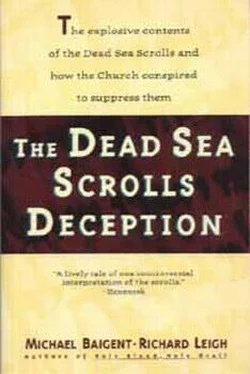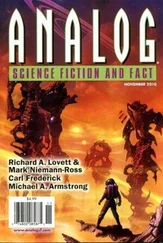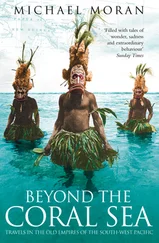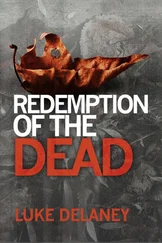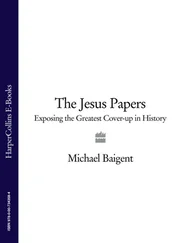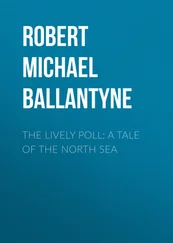Eisenman responded to Strugnell’s brush-off by going as public as he possibly could. By the middle of 1989, the issue had become a cause célèbre in American and Israeli newspapers, and, to a lesser degree, was picked up by the British press as well. Eisenman was extensively and repeatedly quoted by the New York Times, the Washington Post, the Los Angeles Times, the Chicago Tribune, Time Magazine and Canada’s Maclean’s Magazine. He stressed five major points:
1. That all research on the Dead Sea Scrolls was being unfairly monopolised by a small enclave of scholars with vested interests and a biased orientation.
2. That only a small percentage of the Qumran material was finding its way into print and that most of it was still being withheld.
3. That it was misleading to claim that the bulk of the so-called ‘biblical’ texts had been released, because the most important material consisted of the so-called ‘sectarian’ texts — new texts, never seen before, with a great bearing on the history and religious life of the 1st century.
4. That after forty years, access to the scrolls should be made available to all interested scholars.
5. That AMS Carbon-14 tests, monitored by independent laboratories and researchers, should immediately be conducted on the Qumran documents.
As was perhaps inevitable, once the media had begun to sensationalise it, the affair quickly degenerated, with Eisenman being misquoted on two separate occasions, and a barrage of invective coming from both sides. But behind the clash of egos, the central issue remained unresolved. As Philip Davies had written in 1988:
Any archaeologist or scholar who digs or finds a text but does not pass on what has been found deserves to be locked up as an enemy of science. After forty years we have neither a full and definitive report on the dig nor a full publication of the scrolls. 34
5. Academic Politics and Bureaucratic Inertia
Early in 1989, Eisenman had been invited to present a paper at a conference on the scrolls to be held at the University of Groningen that summer. The organiser and chairman of the conference was the secretary of the journal Revue de Qumran, the official organ of the Ecole Biblique, the French-Dominican archaeological school in Jerusalem of which most of the international team were members or associates. According to the arrangement, all papers presented at the conference would subsequently be published in the journal. By the time of the conference, however, Eisenman’s conflict with the international team, and the ensuing controversy, had become public. It was not, of course, feasible to retract Eisenman’s invitation. He was therefore allowed to present his paper, but its publication in Revue de Qumran was blocked. [3] The paper has since been published. See Eisenman, ‘Interpreting “Abeit-Galuto in the Habakkuk Pesher’, Folia orientalia, vol. xxvii (1990).
The chairman of the conference was deeply embarrassed, apologising to Eisenman and explaining there was nothing he could do — his superiors, the editors of the journal, had insisted on excluding Eisenman’s paper. 1 Revue de Qumran had thus effectively revealed itself, not as a non-partisan forum for the spectrum of scholarly opinion, but as a species of mouthpiece for the international team.
The balance was, however, slowly beginning to tilt in Eisenman’s favour. The New York Times, for example, had monitored the dispute throughout, and had assessed the arguments of the opposing factions. On 9 July 1989, it pronounced its judgment in an editorial entitled ‘The Vanity of Scholars’:
Some works of scholarship, like the compilation of dictionaries, legitimately take a lifetime. But with others, the reasons for delay can be less lofty: greed for glory, pride, or just plain old sloth.
Consider the sorry saga of the Dead Sea Scrolls, documents that might cast spectacular new light on the early history of Christianity and the doctrinal evolution of Judaism.
The scrolls were discovered in 1947, but many that are in fragments remain unpublished. More than 40 years later, a coterie of dawdling scholars is still spinning out the work while the world waits and the precious pieces lapse into dust.
Naturally, they refuse to let others see the material until it is safely published under their names. The publication schedule of J.T. Milik, a Frenchman responsible for more than 50 documents, is a source of particular frustration to other scholars…
Archaeology is particularly vulnerable to scholars who gain control of materials and then refuse to publish them. 2
Despite the unseemly squabbling, the clack and crack of ruptured amour propre, the fustian and umbrage and general high dudgeon, Eisenman’s arguments were now beginning to carry weight, to convince people. And there was also another development, of comparable importance. The ‘outsiders’ — the adversaries of the international team — were beginning to organise, to consolidate their efforts and conduct conferences of their own. In the months following the editorial in the New York Times, there were to be two such conferences.
The first of these was arranged by Professor Kapera of Krakow, with the aid of Philip Davies, and took place at Mogilany, Poland. It produced what became known as the ‘Mogilany Resolution’, with two main demands: that ‘the relevant authorities’ in Israel should obtain photographic plates of all unpublished scrolls, and that these should be supplied to Oxford University Press for immediate publication; and that the data obtained from de Vaux’s excavations at Qumran between 1951 and 1956, much of which had not yet appeared, should now be issued in definitive published form.
Seven and a half months later, a second conference was convened, on Eisenman’s home territory, California State University at Long Beach. Papers were presented by a number of academics, including Eisenman himself, Professor Ludwig Koenen and Professor David Noel Freedman from the University of Michigan, Professor Norman Golb from the University of Chicago and Professor James M. Robinson from Claremont University, who had headed the team responsible for publishing the Nag Hammadi Scrolls. Two resolutions were produced: first, that a facsimile edition of all hitherto unpublished Qumran fragments should be issued immediately — a necessary ‘first step in throwing the field open to scholars irrespective of point of view or approach’; and second, that a data bank of AMS Carbon-14 results on known manuscripts should be established, to facilitate the future dating of all previously undated texts and manuscripts, whether on papyrus, parchment, codex or any other material.
None of these resolutions, of course, either from Mogilany or from Long Beach, was in any sense legally binding. In the academic community, however, and in the media, they carried considerable weight. Increasingly, the international team were finding themselves on the defensive; furthermore, they were beginning, albeit slowly, to give way. Thus, for example, Milik, while the public battle raged, quietly passed over one text — the very text Eisenman and Davies had requested to see in their letter to Strugnell — to Professor Joseph Baumgarten of Hebrew College in Baltimore. Baumgarten, of course, who was now a member of the international team, characteristically refused to let anyone else see the text in question. Neither did Strugnell — who as head of the team was supposed to authorise and supervise such transactions — bother to inform Eisenman or Davies what had occurred. But the mere fact that Milik was handing over material at all reflected some progress, some sense that he felt sufficiently pressured to relinquish at least part of his private fiefdom — and with it, some of the onus of responsibility.
Читать дальше
